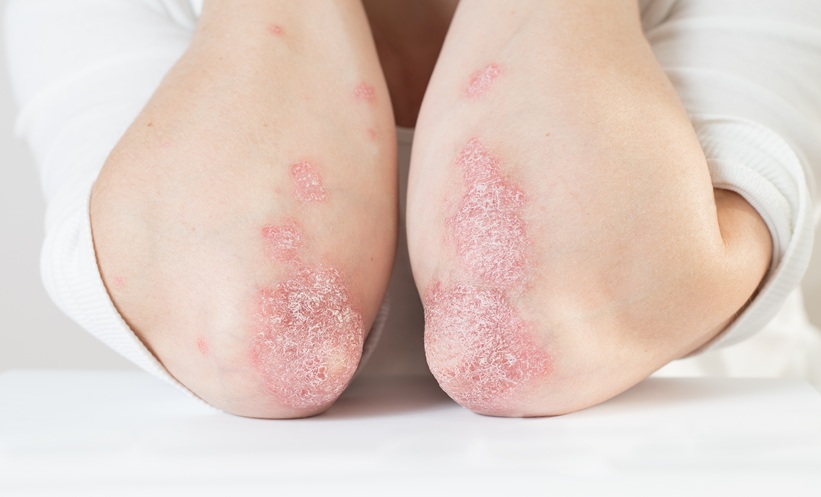The following abstracts have been selected to showcase award-winning abstracts presented at the American Academy of Dermatology (AAD) 2024 Annual Meeting. With a record number of abstracts submitted this year, the research summarized below represents the most exciting developments within the field of dermatology.
Citation: Dermatol AMJ. 2024;1[1]:31-36. https://doi.org/10.33590/dermatolamj/XFQN6712.
![]()
Cardiovascular Morbidity and Mortality in Females with Polycystic Ovary Syndrome Growth Analysis in Children with Atopic Dermatitis
IMPACTS of atopic dermatitis (AD) on the growth of children have been revealed in a piece of research presented at the AAD 2024 Annual Meeting. This abstract took first place at the AAD poster awards, and described an analysis of height, weight, and BMI of children with AD in comparison to the general population, in order to clarify consequences for childhood growth.
A total of 1,329 children were included in the PEDISTAD clinical trial, which is an ongoing international study, incorporating patients aged <12 years with moderate-to-severe AD. This cohort was assessed against the Centers for Disease Control and Prevention (CDC)’s Learning Management System as a healthy control, comparing the percentage of patients above the 50th percentile, and the mean percentiles for height, weight, and BMI.
Looking at the results from this work, in the PEDISTAD study, 50% of males were above the 50th percentile for weight at baseline, but only 38% were above this for height. For their female counterparts, these figures were 51% and 52%, respectively. In participants aged between 5–12 years, only 28% of males and 47% of females were above the 50th percentile for height. Meanwhile, in the case of BMI, 69% of males and 71% of females were above the 50th percentile. The overall averages across all the age specific percentiles were 46th in height, 51st in weight, and 58th for BMI in the case of males; and 50th in height, 50th in weight, and 59th in BMI for females.
The researchers concluded, based on this evidence, that the data suggest moderate-to-severe AD has a negative impact on the growth of children aged <12 years. The explanations for this were hypothesized to be due to sleep deprivation, and/or long-term exposure to topical or systemic glucocorticoids and immunosuppressants.
Link Between Maternal Hidradenitis Suppurativa and Childhood Hospitalization
A RECENT study revealed insights into the impact of maternal hidradenitis suppurativa (HS) on childhood health. Presented at the AAD 2024 Annual Meeting, this research revealed concerning associations with childhood morbidity, and took second place in the annual AAD poster awards.
HS has been associated with adverse pregnancy outcomes, yet its effect on offspring has remained unknown. The retrospective longitudinal cohort study in Québec, Canada, analyzed data from 1,275,593 children born between April 1, 2006–March 31, 2022, with the aim of uncovering the association of the condition with the risk of childhood hospitalization up to 16 years of age. Of the study group, 1,283 children were born to mothers diagnosed with HS, while the remaining 1,274,310 were unexposed.
Study results showed that children exposed to maternal HS had a higher rate of hospitalization compared to unexposed children, with the exposed group experiencing a rate of 53.2 per 1,000 person-years, compared with 36.6 per 1,000 person-years among unexposed children.
It was also revealed that maternal HS was associated with 1.31-times the risk of childhood hospitalization across various categories. The risk of hospitalization was elevated for respiratory issues by 1.21-times, and 2.64-times for metabolic conditions. Furthermore, the risk of hospitalization was higher for gastrointestinal disorders and mental and behavioral disorders among exposed children.
This study underscores the need for heightened awareness and monitoring of children at risk of exposure, as well as the impact of maternal HS on childhood health.
Systemic Janus Kinase Inhibitors: Are They Safe?
SYSTEMIC Janus kinase (JAK) inhibitors have a comparable safety profile to broader immunomodulators, according to new research presented at the 2024 AAD Annual Meeting, held in San Diego, California, USA.
JAK inhibitors are currently approved for the treatment of atopic dermatitis and alopecia areata, and have exhibited great efficacy for several other dermatologic conditions in ongoing clinical trials. However, safety concerns have arisen due to the U.S. Food and Drug Administration (FDA) issuing a black box warning on their risk for long-term adverse events (AE).
First author of this abstract, and awarded third place, Olivia Lamberg, University of Michigan Medical School, Ann Arbor, USA, and team, conducted a comprehensive literature review to assess the long-term AEs associated with oral JAK inhibitors, compared to traditional immunomodulators. The search focused on articles reporting medication exposure exceeding 1 year, and subsequent development of AEs, including malignancies, major adverse cardiovascular events, venous thromboembolism, and infections. The study encompassed several JAK inhibitors commonly used for dermatologic conditions, including tofacitinib, baricitinib, upadacitinib, and ruxolitinib, as well as traditional immunomodulators, such as cyclosporine, methotrexate, etanercept, adalimumab, and systemic steroids.
The team found no significant difference in the incidence rate of major adverse events (per 100 patients per year) between JAK and non-JAK inhibitors, for malignancies (excluding non-melanoma skin cancer), venous thromboembolism, or serious infections. JAK inhibitors exhibited lower rates of non-melanoma skin cancer and major adverse cardiovascular events, but higher rates of Herpes zoster infection.
The study supports that JAK inhibitors have a comparable safety profile to non-JAK medications, and thus represent a therapeutic advancement, with more precise mechanisms of action compared to broader immunomodulators. A limitation of the study was that the methodology was not a systematic literature review, potentially leading to the omission of some relevant data. In future research, Lamberg and team will investigate specific patient populations, characteristics, and risk factors to better inform treatment decisions, as well as conduct a systematic review to summarize all data on long-term AEs.
Safety of Low-Dose Oral Minoxidil for Hair Loss
LOW-dose oral minoxidil (LDOM) has become a popular treatment alternative for patients with hair loss, for whom other treatments are logistically challenging, irritating, or ineffective. The safety and efficacy of LDOM for hair loss has not been extensively researched in larger studies, however, highlighting the need for expert, consensus-based guidelines. Thus, a research team, led by Yagiz Matthew Akiska, George Washington School of Medicine and Health Sciences, Washington, D.C., USA, sought to investigate this, with their research winning fourth place in the abstract awards at the AAD 2024 Annual Meeting.
Hair loss affects patients’ quality of life significantly, and can be hereditary, autoimmune, inflammatory, or secondary to medical, surgical, or emotional stressors, infection, or cancer therapies. Topical minoxidil (TX) is commonly used to treat hair loss due to its U.S. Food and Drug Administration (FDA)-approved indication; however, it can be ineffective or inconvenient for many patients. In order to test the efficacy and safety of LDOM, a popular alternative treatment, 43 experienced dermatologists, with an average of 18.26 years of post-residency dermatology experience and 6.29 years of experience with LDOM for hair loss, took part in an initial survey. Three further rounds of questions were calibrated for Likert-scale responses, closing questions with ≥70% consensus and eliminating those with <60% consensus. Consensus was reached if ≥70% of participants indicated “agree” or “strongly agree” on a 5-point Likert scale.
In total, 94 items achieved Likert scale consensus, including diagnoses for which LDOM may provide direct or supportive benefit, and indications for LDOM over TX. Consensus was also achieved on adult and adolescent utilization, contraindications, precautions, dosing parameters, baseline evaluation and monitoring protocols, adjunctive therapy, and specialty consultation.
The research team concluded that LDOM has several direct benefits for patients with hair loss, and can be considered as a valid option when TX is more expensive, logistically challenging, no longer effective, causes product residue or skin irritation, or exacerbates inflammatory issues. More research is needed into the treatment, and clear guidelines should be laid out; however, preliminary research shows that LDOM is a good alternative to TX for patients with hair loss.
Grading of Dermatologic Adverse Events from Anti-Cancer Therapies
INCLUDING dermatologists in the grading and classification of dermatologic adverse events (dAE) caused by cancer therapies may be more beneficial than consulting medical oncology physicians alone. New cancer therapies have brought a variety of dAEs beyond those seen with conventional chemotherapy, and Version 5.0 of the Common Terminology Criteria for Adverse Events (CTCAE v5.0) is the current, widely accepted classification and grading criteria used during medical care. There are little data available analyzing the application of this CTCAE, however. This study, which was highly commended in the AAD 2024 Annual Meeting abstract awards, aimed to look into its use across disciplines.
The study, carried out by Christopher Fay, Harvard Medical School, Boston, USA, and team, involved a survey of four cases of dAEs being sent to dermatologists and medical oncology physicians across the USA. Participants were asked to use photographs and text descriptions to grade and classify morbilliform, psoriasiform, and papulopustular rashes. The fourth case required the physicians to grade the condition using only a clinical text description.
In total, 182 medical oncology physicians and 81 dermatology physicians completed the survey. The researchers found that dermatologists were significantly more likely to provide correct responses when it came to classifying morbilliform and psoriasiform eruptions, with greater than 87% correct classification, while correct classification reached as low as 12% amongst the medical oncologists. Dermatologists were also far more likely to correctly grade psoriasiform, papulopustular, and written cases than medical oncologists. As a result of this survey, 87% of medical oncologists reported that they would be interested in additional educational tools on dAEs.
The research team concluded that medical oncologists may have more difficulty delivering appropriate treatment to patients with cancer dealing with dAEs. These results also raised the question of whether CTCAE v5.0 is the most suitable determinant of dAEs as cancer therapies continue to develop. Fay and team suggested that further research look into the potential role of involving dermatologists in grading and classifying these AEs, alongside medical oncologists.







